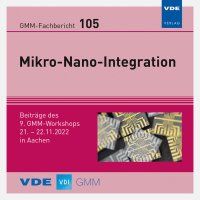Glass-on-Glass Integrated Optofluidic Sensor based on a-Si:H Ring Resonators for Lab-on-Chip Applications
Conference: Mikro-Nano-Integration - 9. GMM-Workshop
11/21/2022 - 11/22/2022 at Aachen, Germany
Proceedings: GMM-Fb. 105: Mikro-Nano-Integration
Pages: 5Language: englishTyp: PDF
Authors:
Alhareeb, Nadeem K.; Vermeer, Matthias L.; Rennpferdt, Lukas; Trieu, Hoc Khiem; Lipka, Timo (Institute for Microsystems Technology, Hamburg University of Technology, Germany)
Abstract:
Optical resonators based on integrated silicon photonic technology are promising sensor components for lab-on-chip applications. We present a novel optofluidic biochemical sensor platform manufactured solely on quartz glass substrates. The manufacturing is described, and initial experimental results are demonstrated. The final sensor chip consists of two parts: the microfluidic channel and the photonic chip, which are bonded together after their respective production. The photonic components are manufactured with hydrogenated amorphous silicon (a-Si:H) which was deposited by plasma-enhanced chemical vapor deposition (PECVD) serving as the waveguide core for the micro-ring sensors. In combination with the glass substrate this results in a high index contrast photonic platform with high integration density. In a second step selective laser-induced etching (SLE) is applied to produce the microfluidic channels in another glass substrate. A 10 µm radius ring resonator is used as a sensing configuration. The quality factor of the ring is about 6000 before applying any fluids, i.e. with air cladding. To characterize the sensor performance, various 0% to 8% concentrations of Isopropyl alcohol (IPA) diluted with deionized (DI) water (H2O) were used as test analytes. The linear regression of the resonance peak shift due to different IPA concentrations indicates a sensitivity of S = 103 pm/%


